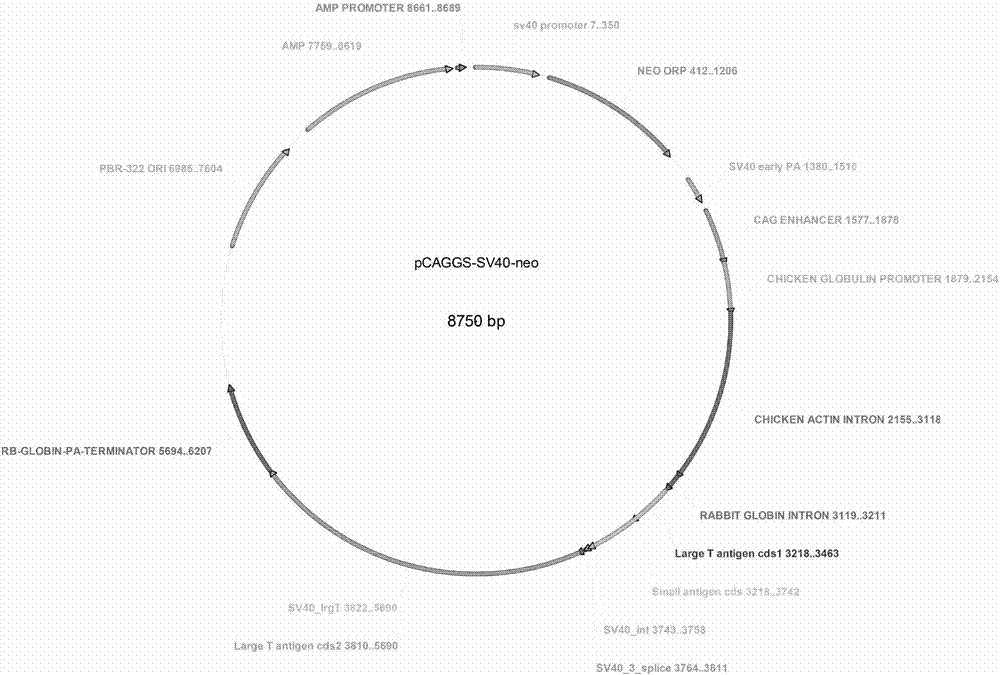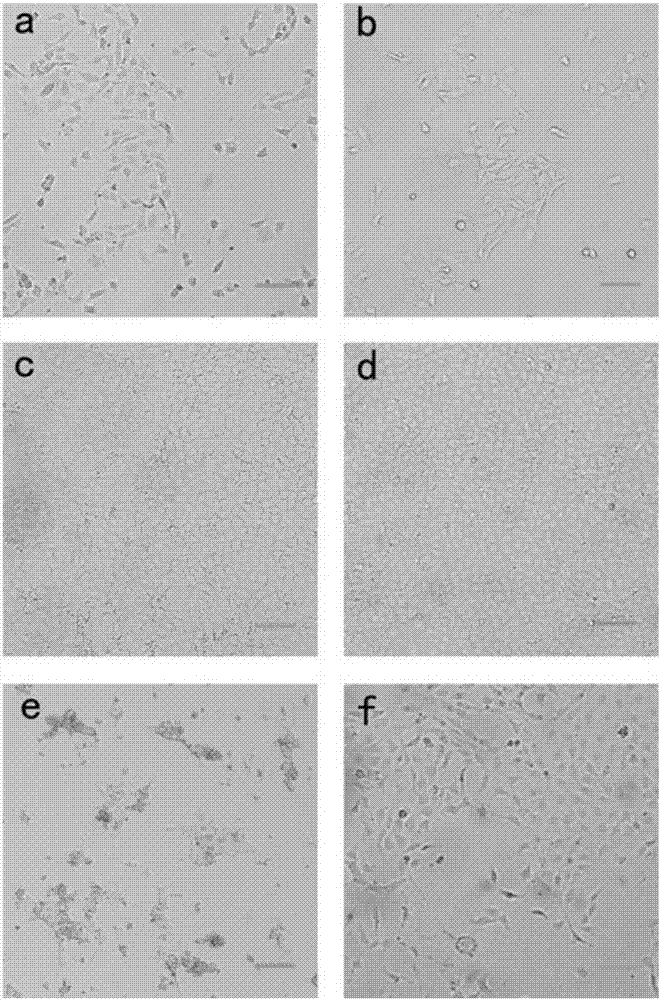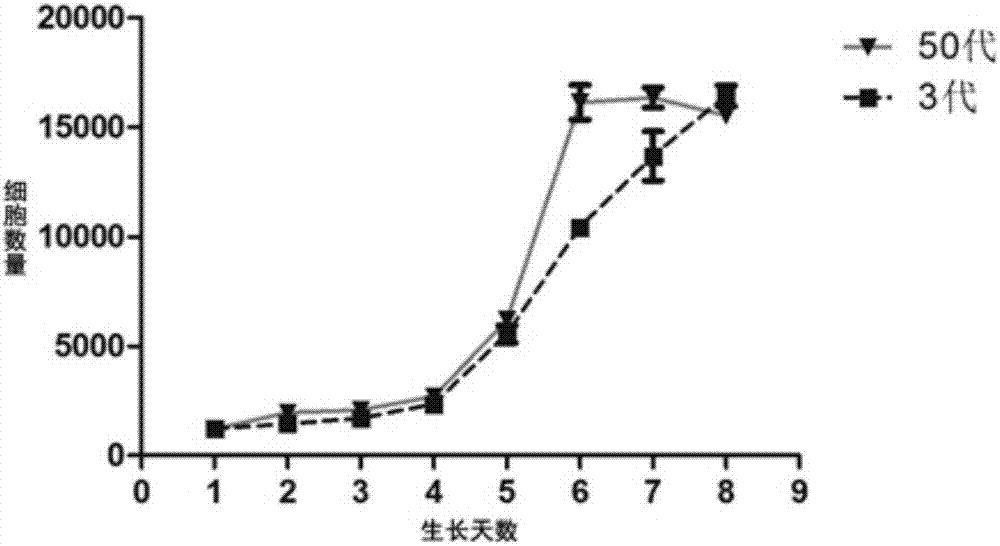Immortalized rabbit small intestine epithelium cell line and construction method thereof
A small intestinal epithelial cell and construction method technology, applied in the field of immortalized rabbit small intestinal epithelial cell line and its construction, can solve the problems of restricting the development of technology in the field and the lack of scientific tools
- Summary
- Abstract
- Description
- Claims
- Application Information
AI Technical Summary
Problems solved by technology
Method used
Image
Examples
Embodiment 1
[0034] 1. Isolation and culture of rabbit intestinal epithelial crypt cell clusters
[0035] The small intestinal cells of newborn rabbits were aseptically collected in the ultra-clean bench, the small intestine was cut longitudinally with sterile scissors, and then the intestinal tissue was chopped into 2mm pieces with a sterile surgical blade 2 tissue fragments. The intestinal tissue was rinsed 2 to 3 times with DMEM medium. Intestinal tissue was digested at 37°C for 20 minutes with enzymatic digestion solution, and the digestion solution needed to be stirred continuously during the digestion process. After digestion, the digested product was filtered using a copper filter with a pore size of 0.5 mm. The filtrate was centrifuged at 500 g for 5 min, and the supernatant was discarded. Use a sorbitol solution with a mass ratio (m / m) of 2.5% to resuspend the precipitate, centrifuge the suspension at 300g for 2 minutes, collect the supernatant in a new centrifuge tube, and the...
Embodiment 2
[0045] 1. Identification of cell lines (transcriptome sequencing analysis)
[0046] When the rabbit small intestinal epithelial cell line cultured to passage 50 grows to 100% confluence, add 0.25% trypsin digestion solution containing EDTA 0.5mL, in 5% CO 2 Incubate in a cell culture incubator at 37°C for 5 min, then pipette to dislodge the cells, add medium to stop digestion, collect cells by centrifugation at 800 g for 5 min, and add 1 mL of TRIzol reagent (Ambion, USA, Cat. No. 139605). Extract total RNA from the sample using the standard method provided by the reagent manufacturer.
[0047] The concentration and purity of the extracted RNA were measured with a spectrophotometer. Then, according to the results of 1% MOPS gel electrophoresis (the loading amount of total RNA is about 1 μg), the total RNA extracted was evaluated for RNA integrity and whether there was genomic DNA contamination.
[0048] After using the ribo-zero kit to digest the ribosomal RNA; add the inter...
Embodiment 3
[0055] Embodiment 3 Eimeria major in vitro culture
[0056] Digest the full length of a 25cm 2 Cell culture flasks of rabbit intestinal epithelial cells, counted, and diluted cells. Add 10 to each well of a 6-well plate for cell culture 6 cells and cultured for 12 h. After the cells adhered to the wall, 10 6 Sporozoites were cultured for 6 hours. After the cells are confluent, gently wash the cell culture plate with 5 times double antibody to wash away the non-invading sporozoites, and then add 5% FBS and MEM199 medium. Culture exchange time was set to 48h, 94h. After the extracted old culture medium was examined under a microscope, it was discarded after ensuring that there were no escaped merozoites. If there were merozoites, centrifuged and re-added to new cells to continue culturing. After 96 h, merozoites were continued to be cultured using low serum MEM199 medium containing 2.5% FBS. If the cell culture plate is overgrown, trypsinization with EDTA is used to pass ...
PUM
| Property | Measurement | Unit |
|---|---|---|
| Aperture | aaaaa | aaaaa |
Abstract
Description
Claims
Application Information
 Login to View More
Login to View More - R&D
- Intellectual Property
- Life Sciences
- Materials
- Tech Scout
- Unparalleled Data Quality
- Higher Quality Content
- 60% Fewer Hallucinations
Browse by: Latest US Patents, China's latest patents, Technical Efficacy Thesaurus, Application Domain, Technology Topic, Popular Technical Reports.
© 2025 PatSnap. All rights reserved.Legal|Privacy policy|Modern Slavery Act Transparency Statement|Sitemap|About US| Contact US: help@patsnap.com



